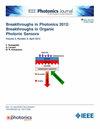A Hybrid Attention Mechanism and RepGFPN Method for Detecting Wall Cracks in High-Altitude Cleaning Robots
IF 2.1
4区 工程技术
Q3 ENGINEERING, ELECTRICAL & ELECTRONIC
引用次数: 0
Abstract
Aiming at the problem that cracks with different shapes and scales on the exterior walls of high buildings are difficult to detect, this paper proposed a wall crack detection method for high-altitude cleaning robots by hybridizing the GAM attention mechanism and RepGFPN. First, the GAM attention mechanism was incorporated into the YOLOV5 backbone network to reduce information and amplify global features to improve the accuracy of feature extraction. Then, the neck network incorporated the RepFPN method to improve the descriptive ability of fused multi-scale features and to increase computational efficiency. Public datasets Concrete Crack Images for Classification, Mixed VOC2007, CrackForest-dataset-master, and UCMerced_LandUse were used for experimental validation. The ablation experiment results show that the average accuracy of mAP is improved by 13.5% after introducing the GAM attention mechanism under the yolov5 s original model, while the method in this paper (GR-YOLO) continues to improve by 4.7%. The experimental results show that the average accuracy mAP of the proposed method (GR-YOLO) is 24.0%, 47.1% and 41.0% higher than that of the model yolov5s + involution, yolov5s + p2 + involution and yolov5s + p2 + involution + CBAM, respectively. The method proposed in this article can more effectively improve the accuracy of crack detection and has important application prospects.用于检测高空清洁机器人墙壁裂缝的混合注意机制和 RepGFPN 方法
针对高层建筑外墙不同形状和尺度的裂缝难以检测的问题,本文提出了一种混合 GAM 注意机制和 RepGFPN 的高空清洁机器人墙体裂缝检测方法。首先,在 YOLOV5 骨干网络中加入 GAM 注意机制,以减少信息并放大全局特征,从而提高特征提取的准确性。然后,在颈部网络中加入 RepFPN 方法,以提高融合多尺度特征的描述能力,并提高计算效率。公开数据集《混凝土裂缝图像分类》、《混合 VOC2007》、《CrackForest-dataset-master》和《UCMerced_LandUse》被用于实验验证。烧蚀实验结果表明,在 yolov5 原始模型下引入 GAM 注意机制后,mAP 的平均准确率提高了 13.5%,而本文方法(GR-YOLO)继续提高了 4.7%。实验结果表明,本文提出的方法(GR-YOLO)比 yolov5s + 内卷模型、yolov5s + p2 + 内卷模型和 yolov5s + p2 + 内卷 + CBAM 模型的平均精度 mAP 分别高 24.0%、47.1% 和 41.0%。本文提出的方法能更有效地提高裂缝检测的准确性,具有重要的应用前景。
本文章由计算机程序翻译,如有差异,请以英文原文为准。
求助全文
约1分钟内获得全文
求助全文
来源期刊

IEEE Photonics Journal
ENGINEERING, ELECTRICAL & ELECTRONIC-OPTICS
CiteScore
4.50
自引率
8.30%
发文量
489
审稿时长
1.4 months
期刊介绍:
Breakthroughs in the generation of light and in its control and utilization have given rise to the field of Photonics, a rapidly expanding area of science and technology with major technological and economic impact. Photonics integrates quantum electronics and optics to accelerate progress in the generation of novel photon sources and in their utilization in emerging applications at the micro and nano scales spanning from the far-infrared/THz to the x-ray region of the electromagnetic spectrum. IEEE Photonics Journal is an online-only journal dedicated to the rapid disclosure of top-quality peer-reviewed research at the forefront of all areas of photonics. Contributions addressing issues ranging from fundamental understanding to emerging technologies and applications are within the scope of the Journal. The Journal includes topics in: Photon sources from far infrared to X-rays, Photonics materials and engineered photonic structures, Integrated optics and optoelectronic, Ultrafast, attosecond, high field and short wavelength photonics, Biophotonics, including DNA photonics, Nanophotonics, Magnetophotonics, Fundamentals of light propagation and interaction; nonlinear effects, Optical data storage, Fiber optics and optical communications devices, systems, and technologies, Micro Opto Electro Mechanical Systems (MOEMS), Microwave photonics, Optical Sensors.
 求助内容:
求助内容: 应助结果提醒方式:
应助结果提醒方式:


